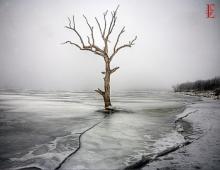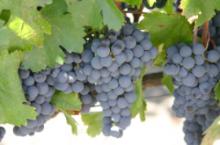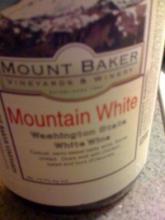The Physics of Cold Spots: Part 1 of 2
Cold spots are one of the hallmarks of a haunting. Any ghost hunter worth the title will carry some sort of thermometer for testing the temperature of the air. Many people report that the ambient temperature drops when ghosts are present (or about to be present). The standard explanation is that the spirits are drawing the energy from the air in order to manifest. But what does that mean, and is it plausible?
The phenomena of cold spots is well-known enough to be featured in television shows like Supernatural and movies like The Sixth Sense. Just before a ghost appears, things get chilly enough that you can see the actors' breath. There is no shortage of anecdotal evidence regarding cold spots.
A lot of "cold spot" accounts can be written off as a case of misidentification. I know that I frequently mistake feeling hungry for feeling tired. I think "Man, I'm really tired!" But then I eat something, and magically I am no longer tired.
Imagine then how easy it is to misidentify a physical sensation under stressful circumstances, like investigating a hallway where you just heard footsteps, even though you're alone in the house. Under these terrifying situations, it's understandable that people could mistake the physical characteristics of fright - like the hair standing up on your neck and arms - for being cold.
I immediately write off any accounts of cold spots where the cold spot is no colder than the ambient temperature outside. Let's say it's 75 degrees inside a house, and 58 degrees outside, and a researcher measures a drop inside from 75 degrees to 62 degrees. That's not a cold spot - that's a draft, straight up. It may be a strange, irregular draft, or it may be a blob of cooler air from someone having opened a door earlier. But it's not ghosts.
We're used to thinking of the air inside a house being pretty much the same temperature. But if you start paying attention, you will notice it's not as homogenous as you think. As you move through your home, you're constantly moving between pockets and zones of different temperatures. You may never even notice - until a ghostly experience puts you on alert, and sharpens your attention.
As for the explanation that the spirits draw energy from the air in order to manifest. This is possible, although incredibly inefficient. You can tell it doesn't work very well just based on the fact that we don't do this! Just look at how expensive it is to cool your house with an air conditioner.
If it was possible to extract heat from air and use it as energy in any meaningful way, you wouldn't have to plug in an air conditioner - it would be able to suck energy from the air to run itself WHILE it cooled your room! As awesome as that would be, it's not the way the world works.
In the next article, we will take a look at the Peltier effect, and why it may or may not be what ghosts are using.
Creative Commons-licensed image courtesy of Flickr user Kansas Poetry (Patrick)







